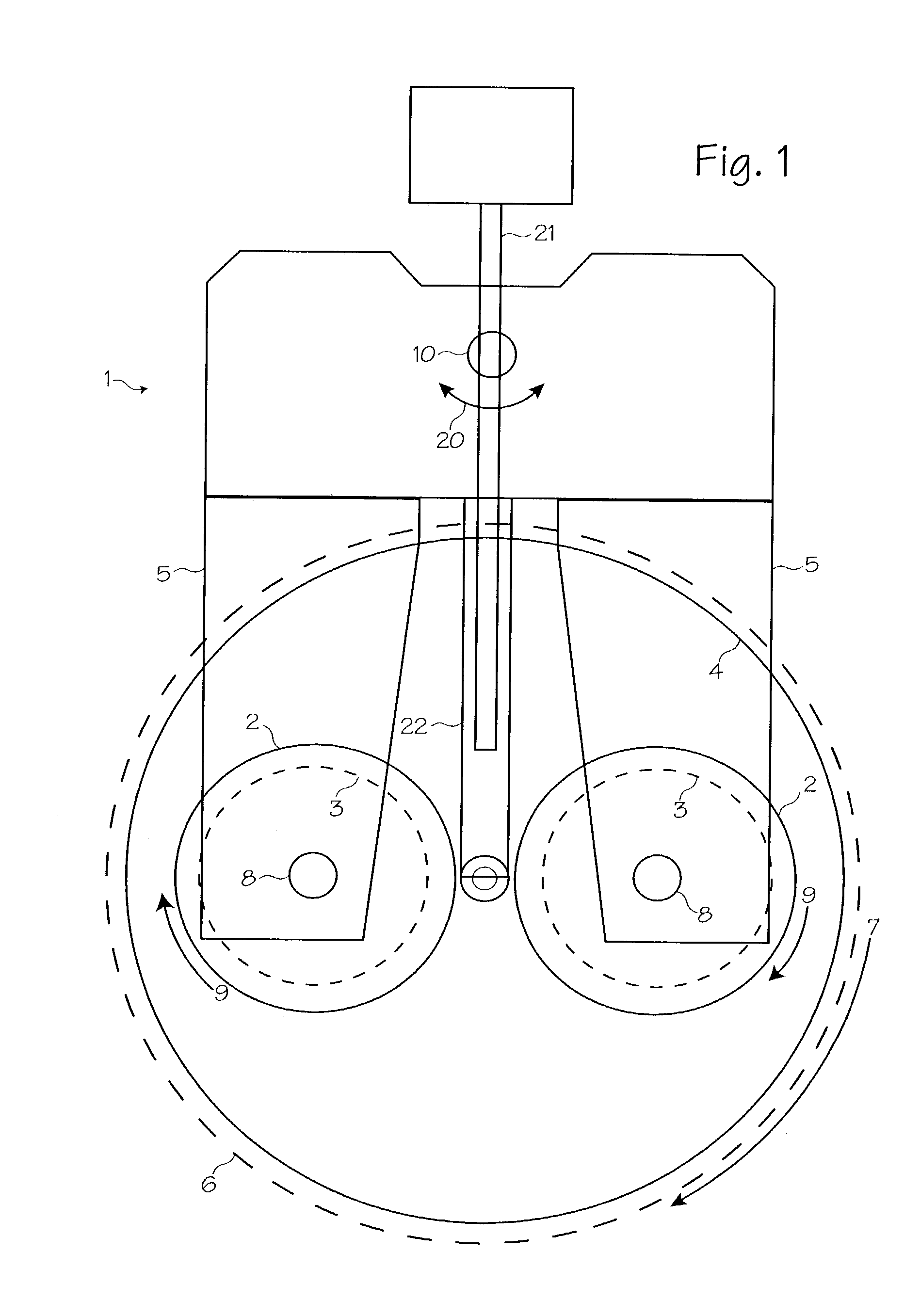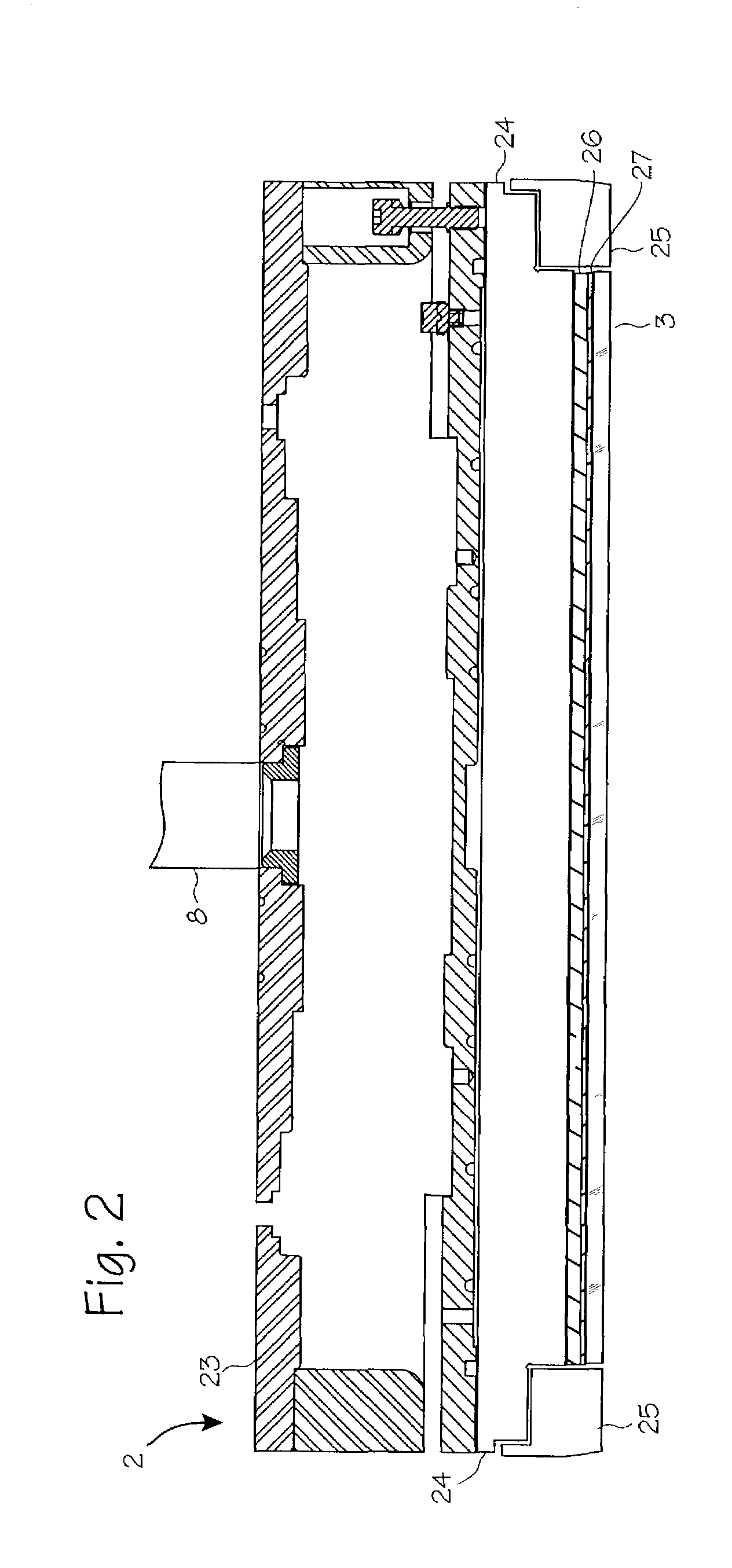Back pressure control system for CMP and wafer polishing
a control system and wafer technology, applied in the field of wafer carriers, can solve the problems of limiting the resolution of lithography, high spots subject to thinning, and the inherent challenges of controlling center-to-edge uniformity in the cmp process
- Summary
- Abstract
- Description
- Claims
- Application Information
AI Technical Summary
Benefits of technology
Problems solved by technology
Method used
Image
Examples
Embodiment Construction
[0019]FIG. 1 shows a system 1 for performing chemical mechanical planarization. One or more polishing heads or wafer carriers 2 hold wafers 3 (shown in phantom to indicate their position underneath the wafer carrier) suspended over a polishing pad 4. The wafer carriers are suspended from translation arms 5. The polishing pad is disposed on a platen 6, which spins in the direction of arrow 7. The wafer carriers 2 rotate about their respective spindles 8 in the direction of arrows 9. The wafer carriers are also translated back and forth over the surface of the polishing pad by the translating spindle 10, which moves as indicated by arrow 20. The slurry used in the polishing process is injected onto the surface of the polishing pad through slurry injection tube 21, which is disposed on or through a suspension arm 22. (Other chemical mechanical planarization systems may use only one wafer carrier that holds one wafer, or may use several wafer carriers that hold several wafers. Other sys...
PUM
 Login to View More
Login to View More Abstract
Description
Claims
Application Information
 Login to View More
Login to View More - R&D
- Intellectual Property
- Life Sciences
- Materials
- Tech Scout
- Unparalleled Data Quality
- Higher Quality Content
- 60% Fewer Hallucinations
Browse by: Latest US Patents, China's latest patents, Technical Efficacy Thesaurus, Application Domain, Technology Topic, Popular Technical Reports.
© 2025 PatSnap. All rights reserved.Legal|Privacy policy|Modern Slavery Act Transparency Statement|Sitemap|About US| Contact US: help@patsnap.com



